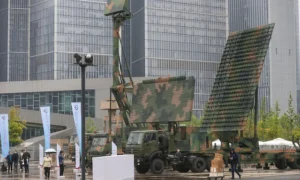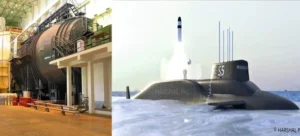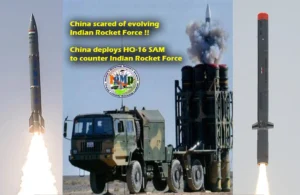Source : ABP News
 |
| Representative Image |
The Indian Navy was enriched with two most powerful warships last week. With the commissioning of the Stealth Destroyer, Mormugao, on December 28 and Submarine INS Vagir two days later, the Navy has substantially augmented its sea denial and sea control capabilities on the high seas. Earlier, in September, the Indian Navy inducted the biggest warship in its fleet with the formal commissioning of the indigenously built aircraft carrier Vikrant. Though the Indian Navy has less than half the fleet strength of its principal rival China, it has already emerged as a force to reckon with in the Indo-Pacific maritime domain. It has acquired enough deterrent capability to challenge any naval power in its waters, i.e. the Indian Ocean.
The international strategic community is closely watching the gradual rise of the Indian Navy, on which rests the maritime strategy of QUAD, the Indo-Pacific democratic alliance. With China posing a major challenge to international order in the maritime domain, India’s naval might is being seen as principal counter balance. The coming together of four democratic powers in the Indo-Pacific region — India, Japan, Australia, and the US — under the QUAD grouping adds to the Indian Navy’s profile and stature in the region.
Already equipped with nuclear submarine Arihant, the Navy has two more nuclear subs in the pipeline, regarding which naval officials have remained tightlipped so far. The Indian Navy has an ambitious plan to build nuclear-powered submarines indigenously. Though the Indian Navy aims to acquire a fleet strength of 200 warships by 2027, the present strength of 150 requires serious attention from the country’s strategic planners. If we compare this with China, it has 355 warships as it plans to become the number one naval power.
With the increasing forays of Chinese PLA Navy in the Indian Ocean and its extra legal claims of the maritime areas in the South China Sea, the Indian Navy, which is mandated to protect Indian maritime trade, needs urgent force accretion. Though 46 warships are currently under construction, many vintage warships in service need to be retired soon. The government has, however, cleared the proposal to build 55 more ships and submarines in Indian shipyards. On the eve of the Navy Day (December 4), Chief of Naval Staff Admiral Hari Kumar asserted that the Indian Navy will be fully self-reliant by 2047, when India will celebrate the centenary year of its Independence.
For this, Indian strategic planners need to expedite the decision-making process. The immediate priority should be to knock out all the policy impediments in acquiring six more hunter-killer diesel-electric submarines under Project 75I, the plan for which was chalked out almost a decade and a half ago. Under
Project 75, the Indian Navy commissioned its fifth of the six Scorpene submarines of INS Kalvari class, with the last and sixth of the Scorpene submarines being built by MDL, Mumbai. The Indian Navy submarine strength is now 17, which includes four German HDW, seven Russian Kilo-class, five Kalvari class French Scorpenes and one Indian nuclear-powered submarine Arihant. The P-75 built submarines are expected to enhance the combat capabilities of the Indian Navy, at a time when China is widening its footprint in the Indian Ocean region.
Warships To Submarines — The Rising Strength Of Indian Navy
A significant development last week was the launching of the anti-submarine warfare ship Arnala, which will replace Abhay class anti-submarine warfare ships. The Arnala ships are much more potent and expected to deter Chinese submarines from silently entering Indian waters. Arnala is the Indian Navy’s first anti-submarine warfare ship. The Arnala class of warships has been designed to undertake anti-submarines operations in coastal waters and low-intensity maritime operations, including surface surveillance in littoral waters. Orders for eight of these anti-submarine warfare shallow watercraft have been placed with the Garden Reach Shipbuilders and Engineers in Kolkata, a pioneer warship builder of the country.
The Mazgaon Dockyard Limited, another major warship builder, has built the state-of-the-art warship, Mormugao, which has special stealth characteristics that enable the warship to evade the prying eyes of the enemy radars. The lead ship of project 15-B, Visakhapatnam, was delivered to the Indian Navy last year in November. Two more destroyers under project 15 B, Imphal and Surat, are under various advanced phases of construction at the MDL. Designed by the Indian Navy’s own design bureau, the four warships are christened after four major cities from the four corners of the country.
Named after the port city of Goa, Mormugao is a shining example of India’s prowess in warship building. Project 15-B is a follow-on of the four Kolkata class destroyers, under Project 15-A, commissioned over the last decade. With overall 75 percent indigenous content, Mormugao displaces 7,400 tonnes when fully loaded. When in a combat role, the warship will be armed with medium-range surface-to-air missiles, BrahMos surface-to-surface missiles, indigenous torpedo tube launchers, anti-submarine rocket launchers, and a 76mm Super Rapid Gun mount. The warship can protect itself from attacking missiles, drones, and aircraft, whereas its BrahMos supersonic cruise missiles will not allow any warship to roam around 300 km of its position. Also, the ship will have a cutting-edge combat management system, integrated platform management system, automated power management system, foldable hangar doors, Helo traversing system, close-in weapon system, and bow-mounted Sonar.
The diesel-electric submarine INS Vagir was built with French assistance at the Mumbai MDL. This is the fifth of the six submarines contracted with French Scorpene submarine builders. Submarine construction is an intricate activity as the difficulty is compounded when all equipment is required to be miniaturised and is subject to stringent quality requirements. Construction of these submarines in an Indian shipyard is another step towards Atmanirbhar Bharat (self-reliant India) and enhances self-confidence in this field.
Armed with these advanced submarines and warships, the Indian Navy has adopted a mission-based deployment philosophy, which has enhanced the Indian Navy’s presence across the region, enabling rapid responses to emerging security challenges. The Indian Navy has established a persistent footprint in India’s area of interest, including at various choke points in the Indian Ocean. Naval deployments also serve as a deterrent to inimical interests, clearly signalling the Navy’s reach, capability, and intent. The strategic competition between big powers has already shifted to the maritime domain, for which the Indian Navy needs to be adequately prepared with matching fleet strength, at least in quality if not quantity, of the rival navies.








